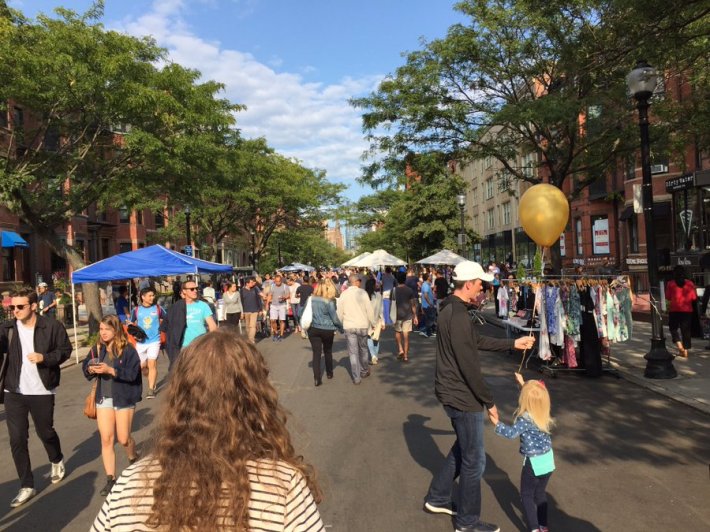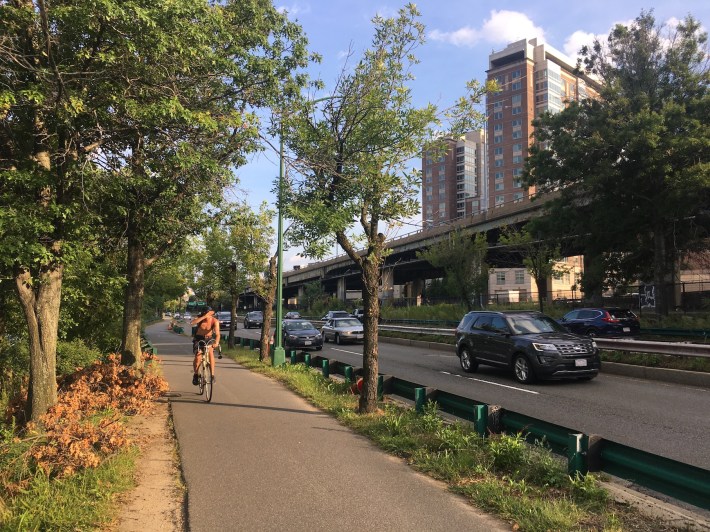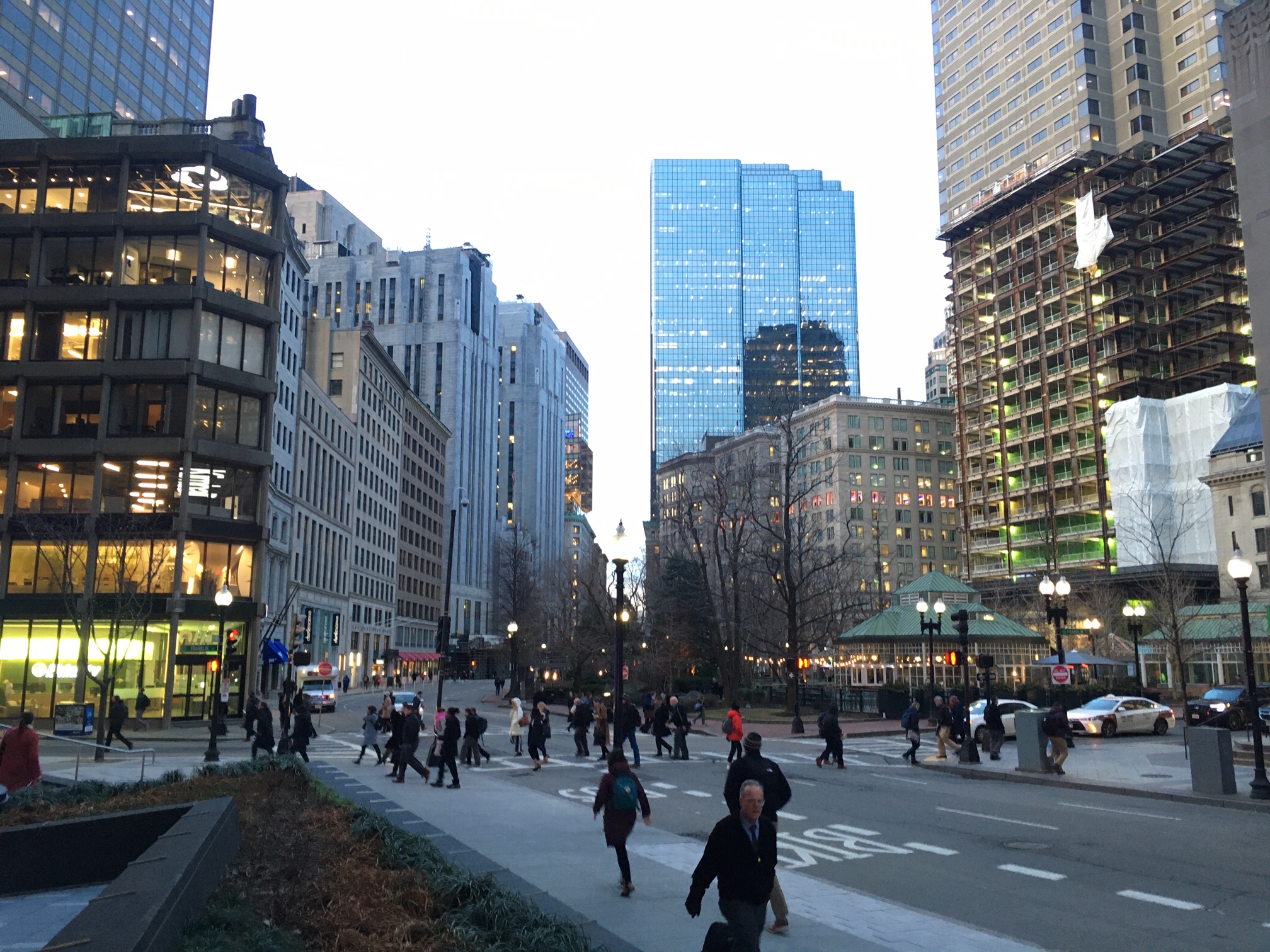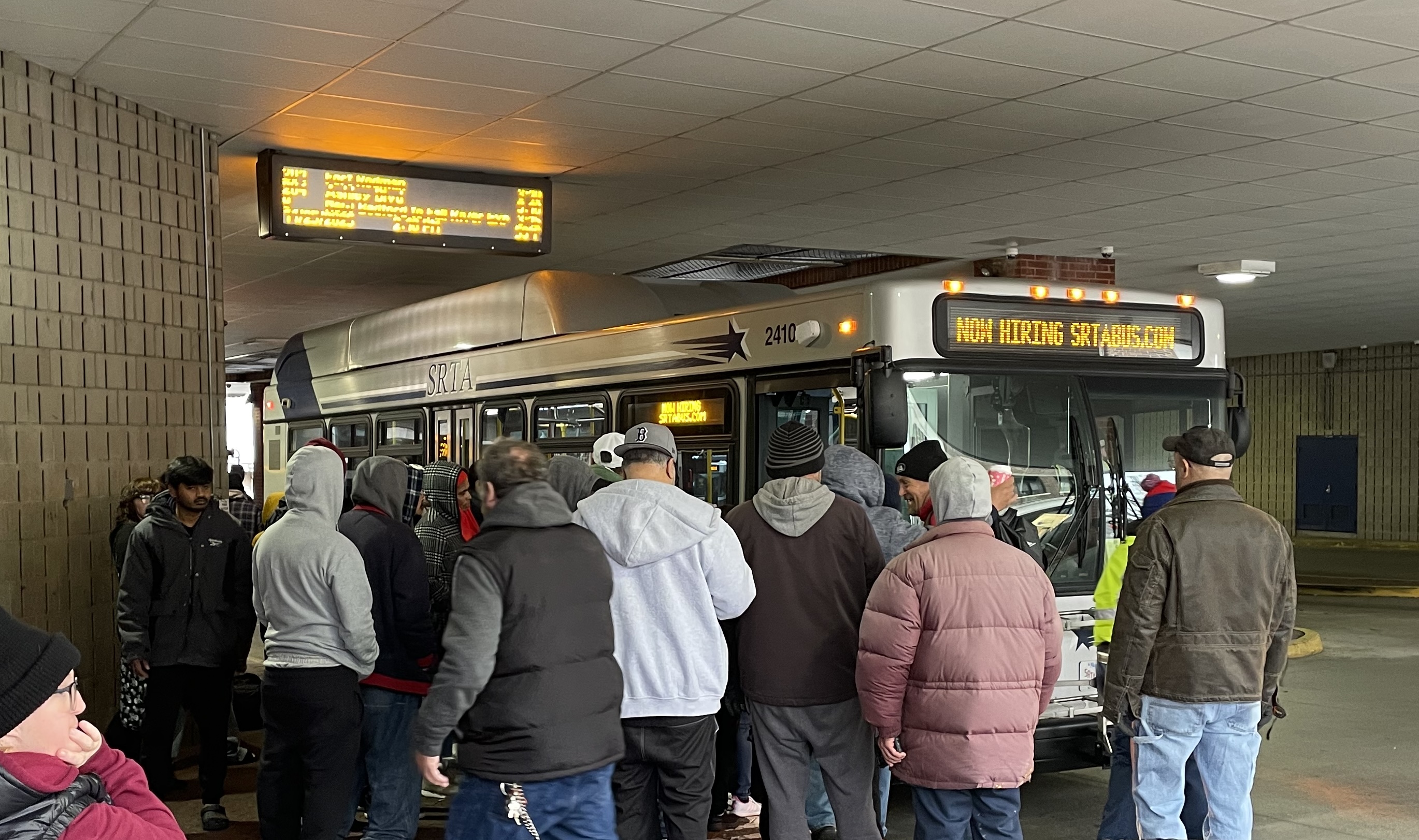Last year, New York City banned cars on 14th Street; this month, San Francisco did it on Market Street. The results have been impressive and politically popular, as traffic has seemingly vanished without a trace.
So, where should Massachusetts create its own car-free success story? StreetsblogMASS put the question out to several local advocates. Here are their ideas:
Congress Street in downtown Boston
Suggested by Stacy Thompson, executive director of LivableStreets:
"As LivableStreets has been saying for more than a year - Congress Street is an ideal location to implement full Bus Rapid Transit (BRT)... Congress street has the potential to become the literal heart (geographically speaking) of the transit, walking, and biking transformation that is taking hold in Metro Boston.
"It would be a desperately needed direct connection between North Station and the Seaport and would expand the pedestrianization that has already transformed Downtown Crossing.
"We’d suggesting running BRT basically the entire length of Congress Street and at the very least restrict the road to walking, biking and transit on the Downtown side of the Fort Point Channel."
Related:
Boston Officials Pitch New Bus-Priority Corridor Between North Station and Seaport
Commercial Street in Provincetown

Suggested by Galen Mook, executive director of MassBike:
"The older sea-side communities that were built out on small peninsulas well before the advent of automobiles would be perfect to consider for this in their commercial districts. Commercial Street in Provincetown already operates like a de facto woonerf."
Mook also suggests pedestrianizing Main Street on Beakskin Neck in Rockport, Merrimac Street in Newburyport, Hanover Street in Boston's North End, and extending the pedestrian-only corridor along Essex Street in Salem.
Washington Street in Chinatown

Suggested by Angela Johnson-Rodriguez, statewide organizing director for Transportation for Massachusetts:
"Washington Street from Court to Kneeland could extend the Downtown Crossing pedestrian zone from City Hall to Chinatown. It could also help in dramatically reducing tailpipe emissions in Chinatown, which is a hotbed of pollution. Pedestrians and cyclists vastly outnumber drivers here."
Related:
Bikes and Buses Getting More Dedicated Lanes In Downtown Boston
Newbury Street in Back Bay

Suggested by Julia Wallerce, Boston Program Manager for IDTP:
"This street has already proved its success as a pedestrian way during the last few years of Open Newbury. It would not include the transit focus of Market Street (in San Francisco), but would serve to humanize a corridor that is already human scaled with heavy foot traffic and a wonderful sense of historic Boston character and place."
"Banning cars from Newbury Street would facilitate even more social activity on this popular shopping corridor by creating more space for outdoor dining, sitting, games, greenery, and art without the noise, fumes, or danger from moving and idling vehicles."
Storrow Drive/Soldiers Field Road in Boston

Suggested by Josh Ostroff, partnerships director for Transportation for Massachusetts:
"Make Storrow Drive bus- and bike-only to help solve the issues with "the throat" and the Paul Dudley White path (in the upcoming Allston/I-90 project). Dedicate a lane on the Mass. Pike to buses too, and create park and ride lots.
"The Allston and other projects will demand that we reform how we allocate scarce pavement during construction."
Main Street in Kendall Square

Suggested by Ari Ofsevit, Boston Program Sr. Associate for IDTP:
"Kendall Square is growing, but the road network around it is not, and traffic has mostly flat-lined (probably because, without a good highway network, only so many vehicles can enter the area)," wrote Ofsevit in a post on his personal blog in January.
"As the planet burns and the region chokes on congestion, we ought to talk about how we can improve the area with less pavement and fewer cars. At the main transit node of Kendall Square, which has tens of thousands of transit riders and other pedestrians a day, the streetscape is mostly given over to automobiles, to the detriment of the vast majority of users. What could be a great, welcoming public space is instead a wide road with plenty of street parking, for no other reason than it’s always been that way. Its time for that to change: Kendall Square should be car-free."
Where else?
We'd like to put this question to our readers – where else should Massachusetts ban cars to improve mobility for bikes, pedestrians and transit users? Sound off in the comments section below – we may highlight the best suggestions in a future post.






